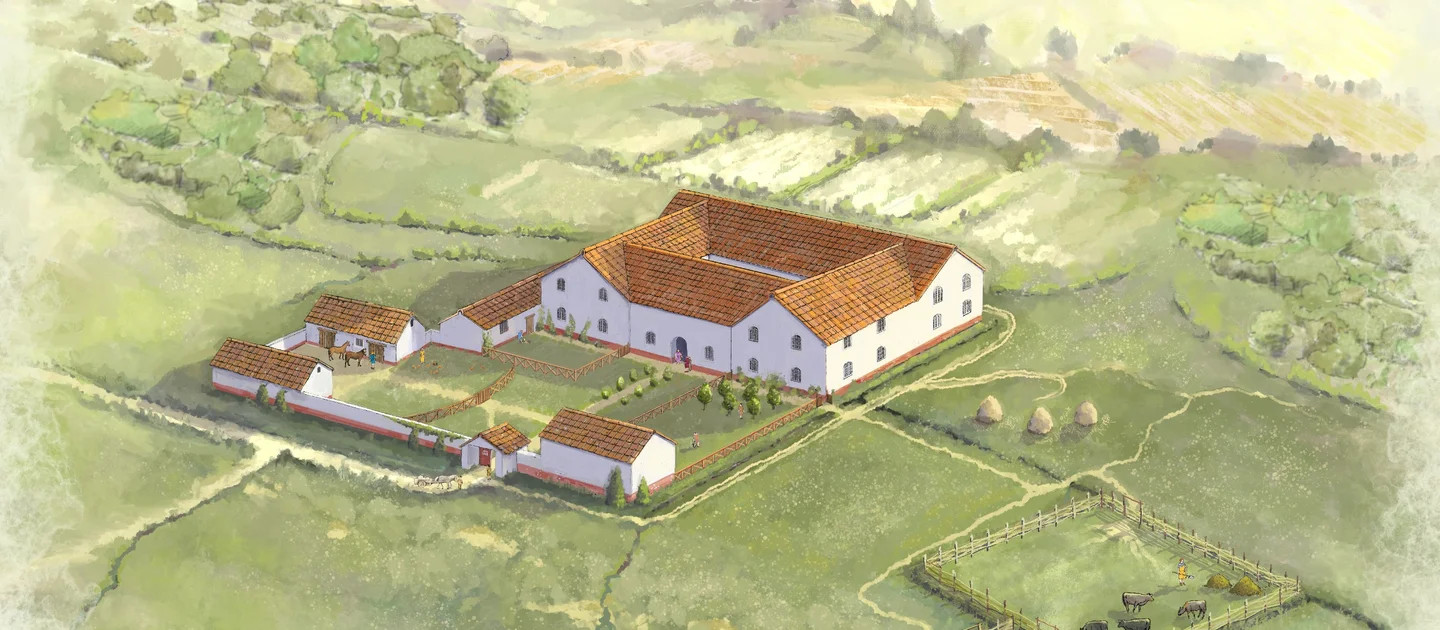And finally… Roman around

Two previously unknown Roman villas and a Roman roadside cemetery have been discovered following the largest geophysical survey ever commissioned by the National Trust.
The one-of-a-kind survey at the Attingham Estate in Shropshire, encompassing over 1,000 hectares (2,471 acres), used innovative scanning and mapping technology.
It was commissioned to provide a better understanding of Attingham’s archaeological remains to help the conservation charity develop its ambitious nature recovery plans for the area.
Geophysics is a method of archaeological survey that helps to understand what is beneath the soil in a non-invasive way where potential for archaeological remains is likely, reducing the need for excavation and ground disturbance.
The Attingham Estate encompasses a portion of the buried Roman city of Wroxeter (Viriconium Cornoviorum), cared for by English Heritage, and some of the land surrounding the city.
Among the significant features identified by the survey work was evidence for what are believed to be two previously unknown Roman villas and a Roman roadside cemetery, on a road leading out of Wroxeter.
The two rural villas – the equivalent of a large country estate – show evidence of at least two construction or occupation phases, along with floor plans with internal room divisions and associated outbuildings.
Villas of this nature in the UK were usually heated by hypocausts (underfloor heating), they often had their own bath houses and were decorated with painted plaster and mosaic floors. It is likely that both villas identified would have had similar features. Only six other Roman villas are currently known in Shropshire.
Eight ditched enclosures and associated remains, many believed to be Iron-Age or Romano British farmsteads, have also been detected by the survey. These would have likely been small farms perhaps supplying food for the adjacent city, four of these were completely unknown until now.
In addition, evidence for several Roman roads to the west of Wroxeter were identified and surveys have substantially enhanced archaeologists’ understanding of the settlement activity immediately outside the defences of the city and the changing use of the area during Roman times.
Elsewhere on the estate, new features associated with a previously known Anglo-Saxon Great Hall complex have been detected, as well as substantial evidence which furthers existing knowledge of RAF Atcham airfield, and its runways, perimeter defences and landscaping.
National Trust archaeologist Janine Young said: “Attingham Estate has always been known to have high historical and archaeological significance which has now been confirmed by the largest geophysical survey the National Trust has ever undertaken.
“We’ve seen tantalising hints of these remains over the years, with evidence showing up in cropmarks, aerial imagery and through small surveys and excavations. But until now, what lies beneath the surface of the ground has never fully been investigated.
“This new geophysical survey has really transformed our knowledge by establishing a comprehensive ‘map’ of what is below our feet, providing us with a fascinating picture of the estate’s hidden past, revealing previously unknown sites of importance.”











